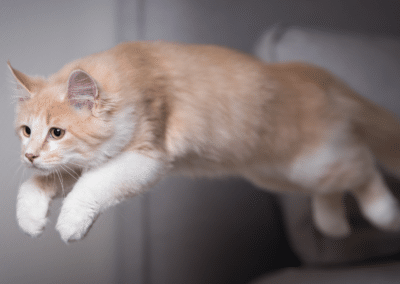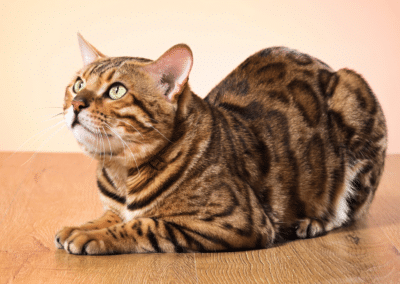Urinary Tract Diseases: Urinary Tract Infection in Dogs & Cats

There are many problems that can affect a dog’s lower urinary system. The most common lower urinary tract disease in dogs over seven years of age is incontinence related to a weak urinary sphincter muscle.

- Stones, crystals or debris accumulation in the bladder or urethra
- Bladder inflammation
- Bacterial infections
- Trauma
- Cancer
- Adrenal disease
- Diabetes mellitus
- Spinal cord abnormalities
- Congenital abnormality
- Prostate disease
- Stress
Sustaining a urinary tract infection in dogs is common. Older female dogs and dogs with diabetes are especially prone to urinary tract problems. There are different types of bladder stones that have a tendency to form under different conditions; some in older dogs, some in either males or females, and some in specific breeds under certain circumstances.
Symptoms
- Inability to urinate or only passing a small amount of urine
- Bloody or cloudy urine
- Loss of bladder control, dribbling urine
- Increased amount and/or frequency of urination
- Straining and/or crying out in pain when trying to pass urine
- Soiling in inappropriate places
- Constant licking of urinary opening
- Strong odor to the urine
- Lethargy, Vomiting
- Changes in appetite
- Weight loss
- Severe back pain
- Increased water consumption
Diagnosis
A routine veterinary visit for lower urinary tract issues will begin with a physical examination of the kidneys and bladder and may include a urinalysis, urine culture, blood work, radiographs or ultrasound. If your dog is straining to urinate and/or showing signs of pain while urinating see your veterinarian for an immediate evaluation. This should be considered a medical emergency.
Treatment
Because canine urinary problems are so varied and potentially serious in nature, your first step is to get immediate veterinary care for your pet. Depending on your dog’s diagnosis, one of the following may be recommended:
- Antibiotics
- Dietary changes
- Nutritional supplements
- Increasing water intake
- Urinary pH regulators
- Intravenous or subcutaneous fluid therapy
- Procedures to remove bladder stones or tumors
- Surgery to correct congenital abnormalities
- Treatment of any underlying condition that is contributing to the urinary problem (e.g. diabetes mellitus)
Untreated lower urinary problems can lead to serious medical situations in addition to causing discomfort for your pet. Bladder infections can move to the kidneys and become life-threatening. Stones can cause partial or complete obstruction of the urethra, preventing a dog from urinating. This medical emergency can lead to kidney failure and/or rupture of the bladder, and can prove fatal if the obstruction is not relieved right away.
Prevention
The key to preventing health problems such as urinary track diseases is regular care and yearly health exams. Feeding a biologically appropriate diet that does not alter the normal pH of the urine and providing plenty of fresh water are some of my keys to optimum lower urinary tract health.

Problems that affect a cat’s lower urinary system often prevent the bladder from emptying correctly or may even cause fatal blockage of the urethra, the tube connecting the bladder to the outside of the body. Usually the culprit is Feline Lower Urinary Tract Disease (FLUTD).

Once called Feline Urologic Syndrome (FUS), FLUTD is not merely a single problem, but a collection of clinical symptoms that may have more than one possible cause.

Some of the things that can result in FLUTD are:
- Stones, crystals or debris accumulation in the bladder or urethra
- A urethral plug (accumulation of debris from urine)
- Bladder inflammation or infection
- Incontinence from excessive water drinking or weak bladder
- Injury to the urinary tract
- A tumor (cancer) involving the lower urinary tract
- Spinal cord problems
- Congenital abnormalities
- Stress

FLUTD is rarely diagnosed in cats younger than one year with the average age typically around four years. Male cats are generally more prone to urethral blockages because of their narrower urethras.
Note: Urinary tract problems in cats can be fatal if the urethra becomes blocked; therefore, it’s important to identify urinary tract infections and other problems early so that they can be treated or prevented before seriously harming your cat.
Symptoms
The following signs may indicate that your cat is having trouble with its urinary tract:
- Inability to urinate or only passing a small amount of urine
- Straining and/or crying out in pain when trying to pass urine
- Bloody or cloudy urine
- Loss of bladder control, dribbling urine
- Increased frequency of urination or visits to the litter box
- Prolonged squatting in litter box
- Fear/avoidance of litter box and soiling in inappropriate places
- Constant licking of urinary opening
- Strong odor of ammonia in urine
- Lethargy
- Vomiting
- Increased water consumption
- Hard, distended abdomen
Treatment
One key to treating FLUTD is to determine the root cause, which may include bladder stones, urinary tract blockage, infection or cancer. If the cause of these symptoms cannot be determined, the cat is considered to have bladder inflammation (cystitis).

A urinary tract infection in dogs and cats should be considered an emergency and be treated immediately.
This material is provided for educational purposes only and is not intended to diagnose or treat any disease or condition. All specific treatment decisions must be made by you and your local, attending veterinarian.
See the article Evolution of the Dog & Cat for information on the foods our pets evolved on and how that relates to Urinary Tract Problems.









Feline idiopathic cystitis (FIC)—also called interstitial cystitis—is the most common diagnosis in cats less than 10 years of age with lower urinary tract disease. The disease is not fully understood and may involve several body systems in addition to the urinary system.